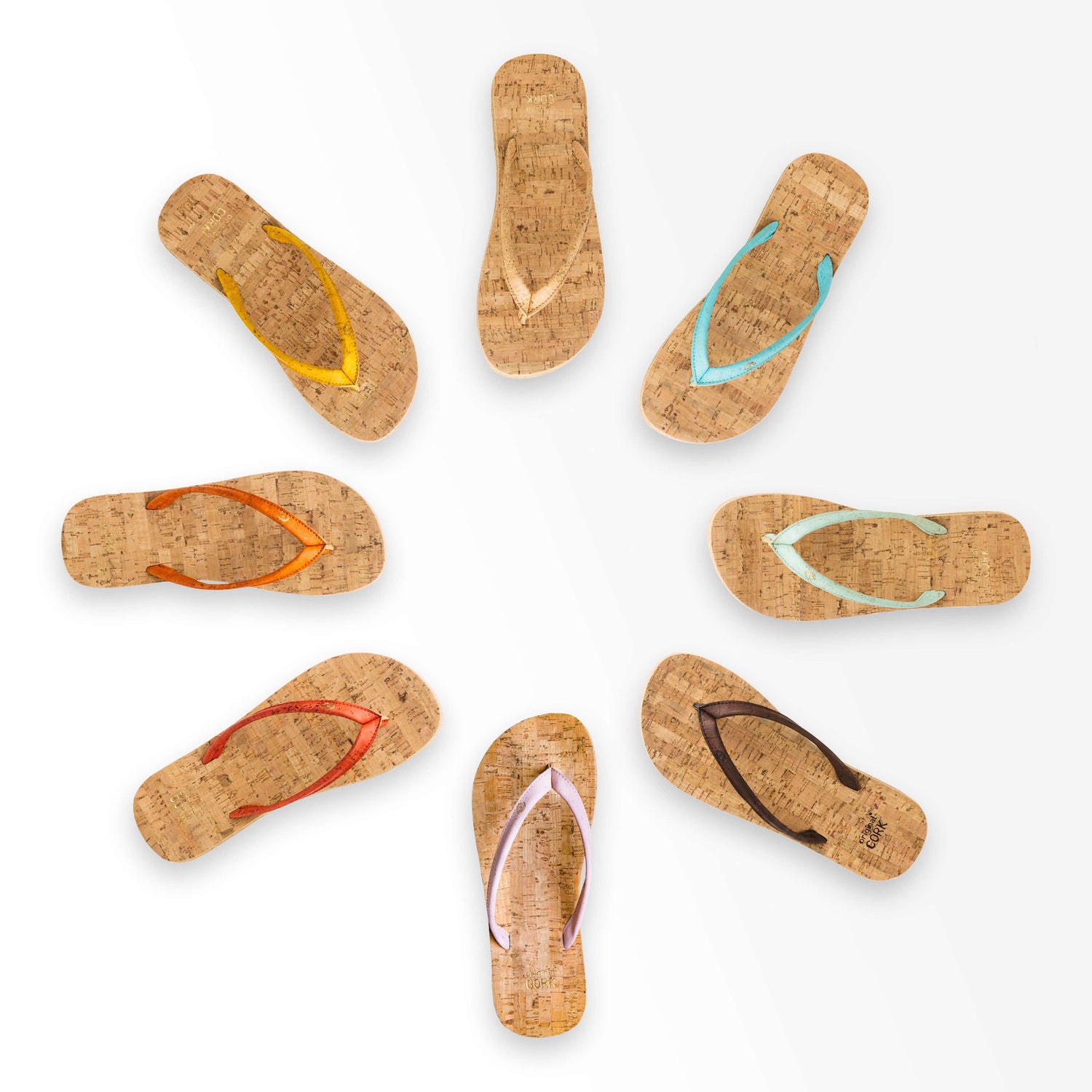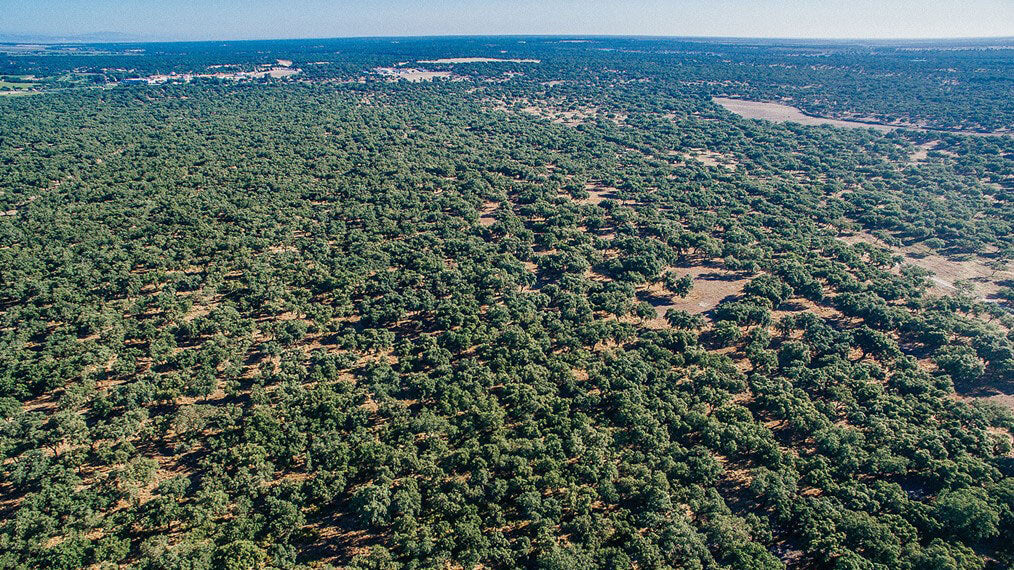Have you ever wondered where cork comes from, how it's extracted, or why it's such an incredible material? If so, join us on a journey to explore the captivating world of cork. As more and more people are seeking to become responsible and ethical consumers, it's important to understand what goes on behind the scenes to make the products we choose for our daily lives. In this article we will delve into the humble origins of cork and how it becomes a part of so many products that surround us. By the end, you'll have gained new insights into this seemingly ordinary material - and perhaps a fresh appreciation for that wine cork the next time you pop one open.
Cork is a versatile, eco-friendly material that is used to create a wide range of products - from wine stoppers to floor tiles, and even fashion accessories. It's known for its durability, natural insulation properties, and unique texture, which has made it a popular choice for both practical and aesthetic applications.
The Magic Begins with the Cork Oak Tree
The story of cork begins with the cork oak tree, also known as Quercus Suber. These trees predominantly grow in the Mediterranean region, which encompasses countries like Portugal, Spain, Algeria, Morocco, Italy, and France. Portugal leads the way as the biggest cork producer in the world, and together with Spain is responsible for almost 80% of the world's cork production. The Cork Oak tree is an evergreen species that can grow up to 20 meters tall, has a unique outer bark, and possesses high environmental value due to its vital role in preventing soil erosion and desertification.
Cork oak trees are an incredible species, capable of shedding their bark without damaging the tree itself, allowing cork to be harvested sustainably. In fact, cork oaks have a lifespan of up to 250 years, providing cork bark throughout their long life.
The cork oak forests are not just essential for cork production but also play a crucial role in preserving biodiversity and maintaining a delicate ecological balance. These forests, called montados in Portugal, are protected by law to ensure the sustainability of the cork oak population and their ecosystems.
Stripping Cork: An Age-Old Sustainable Harvesting Technique
One of the most interesting aspects of cork is its harvesting process. Obtaining cork from the cork oak tree is done through a meticulous process called stripping, which involves carefully removing the outer bark of the tree. This is an sustainable and non-invasive method of harvesting, as it doesn't involve cutting down the tree and causes no harm to the tree at all when done correctly. The extraction of cork requires great skill and is done only by specially trained workers with years of experience, called descortiçadores.
The cork bark is carefully stripped away from the tree trunk by hand, using special axes that minimize damage to the tree. The bark is then removed in long sheets that seem to peel right off of the tree. This process usually takes place during the warmer months when the cork is easier to remove. Each cork oak is harvested only once every 9-12 years to allow the tree time to regenerate its protective bark layer as it continues to grow and thrive.
During its lifetime, a single cork oak can be harvested around 16 times. For this reason, the cork industry not only protects but supports the growth of these extraordinary trees. It goes without saying that cork harvesting does not harm any animals in its wake, but instead, protects animals and their habitat.
 Cork harvesting by hand with a special ax -- Credit: Amorim.com
Cork harvesting by hand with a special ax -- Credit: Amorim.com
The Process of Transformation
Once the cork bark is harvested, it undergoes a thorough cleaning process before being left to air-dry for an extended period, usually up to six months. This helps eliminate any residual moisture and ensures the cork's quality. After the drying phase, the cork is boiled and steamed, which makes it more elastic and easy to work with. Then, the cork slabs are sorted into different grades and thicknesses to be used for various purposes.
Once dry, the cork is cut into thin sheets or ground into granules, depending on the desired end product. For cork stoppers, the sheets are punched into the desired shape and undergo further processing to ensure quality and durability. Meanwhile, waste material from this process is used to produce agglomerated cork or ground into granules for use in other products, ensuring minimal waste and a circular production model. For cork bags and wallets, cork is rolled out into sheets, thinly sliced, and backed with a thicker material such as cotton to create cork fabric or "leather".

From Bark to Products
Cork can be transformed into a vast array of products with different forms and purposes. In some cases, granulated cork is combined with binding agents to form sheets or other shapes, while in others, it may be sliced directly from slabs. Cork's natural properties make it a practical and appealing material for various industries, including the wine industry, construction, interior design, and in creating sustainable fashion items.
The versatility of cork is one of its most impressive features. Of course, the majority of people are most familiar with cork's widespread use as bottle stoppers for wines and champagnes. However, cork's unique properties, such as its flexibility, natural insulation, and water resistance, make it a sought-after material for countless other applications. As a natural insulator, it has been used in construction for insulation and flooring, thanks to its ability to dampen sound and resist extreme temperature changes. It is also a valuable material used for gaskets as it maintains its strength and form over time.
The fashion industry has also embraced cork, using it as a sustainable alternative to leather in accessories, bags, wallets, and shoes. Designers are embracing this eco-friendly material for its aesthetic appeal, creating cork-based furniture or home décor items too - contributing to a growing interest in sustainable and ethical living. The yoga community has also turned to cork as a viable solution for yoga mats, blocks, and massage balls. Cork has even found its way into musical instruments, sports equipment, and aerospace technology.

Cork: A Symbol of Environmental Conservation
Cork production isn't just about creating a functional and eco-friendly material for the consumer market. It's also a significant factor in environmental conservation. The cork oak forests play a crucial role in absorbing CO2 from the atmosphere, providing a habitat for various plant and animal species, and preventing soil erosion. As a result, supporting the cork industry indirectly impacts the preservation and protection of these vital ecosystems.
Preserving Cork's Legacy
Given the many incredible properties and benefits of cork, it's no wonder that sustainability initiatives and responsible management practices are in place to protect cork oak forests. In fact, many cork-producing areas are designated as protected territories. The Portuguese Cork Association, for instance, has implemented a series of actions to preserve the biodiversity of the cork oak forests to ensure future generations can continue to benefit from this unique and irreplaceable resource. Governments, organizations, and consumers play a vital role in supporting these efforts by recognizing and valuing cork's special qualities and its contributions to a greener world.
By understanding its origin and the care and responsibility involved in its production, we can confidently support cork products as an ethical choice. As consumers become increasingly concerned about the environmental impact of the products they purchase, the cork industry continues to thrive on its natural and sustainable approach.
. . .
In our quest to become ethical and responsible consumers, understanding the origin of materials and their impact on the environment is essential. Cork stands out as an incredible example of an eco-friendly, renewable, and long-lasting material with numerous uses and applications. By choosing cork products, we not only contribute to sustainability and environmental conservation but also support the delicate balance in the Mediterranean cork oak forests. So, the next time you need a new everyday bag and are search of a responsible choice, remember the fascinating journey of cork from the cork oak tree to your home. And don't forget to check out our store, featuring an amazing selection of cork fashion and yoga accessories from over 15 brands from across the world.


